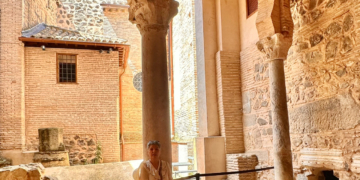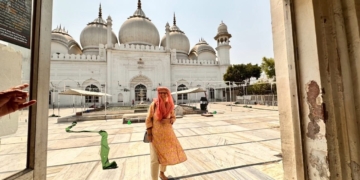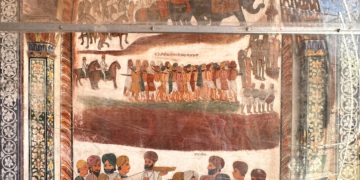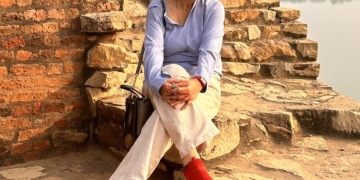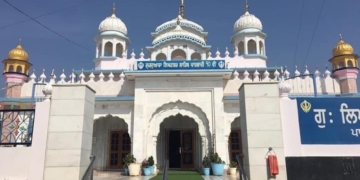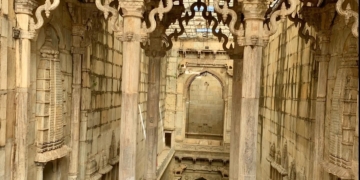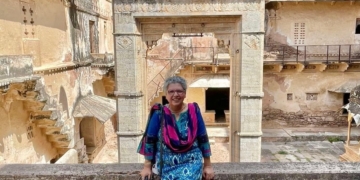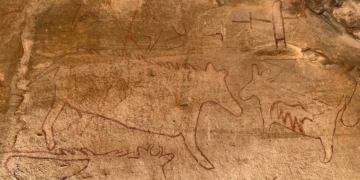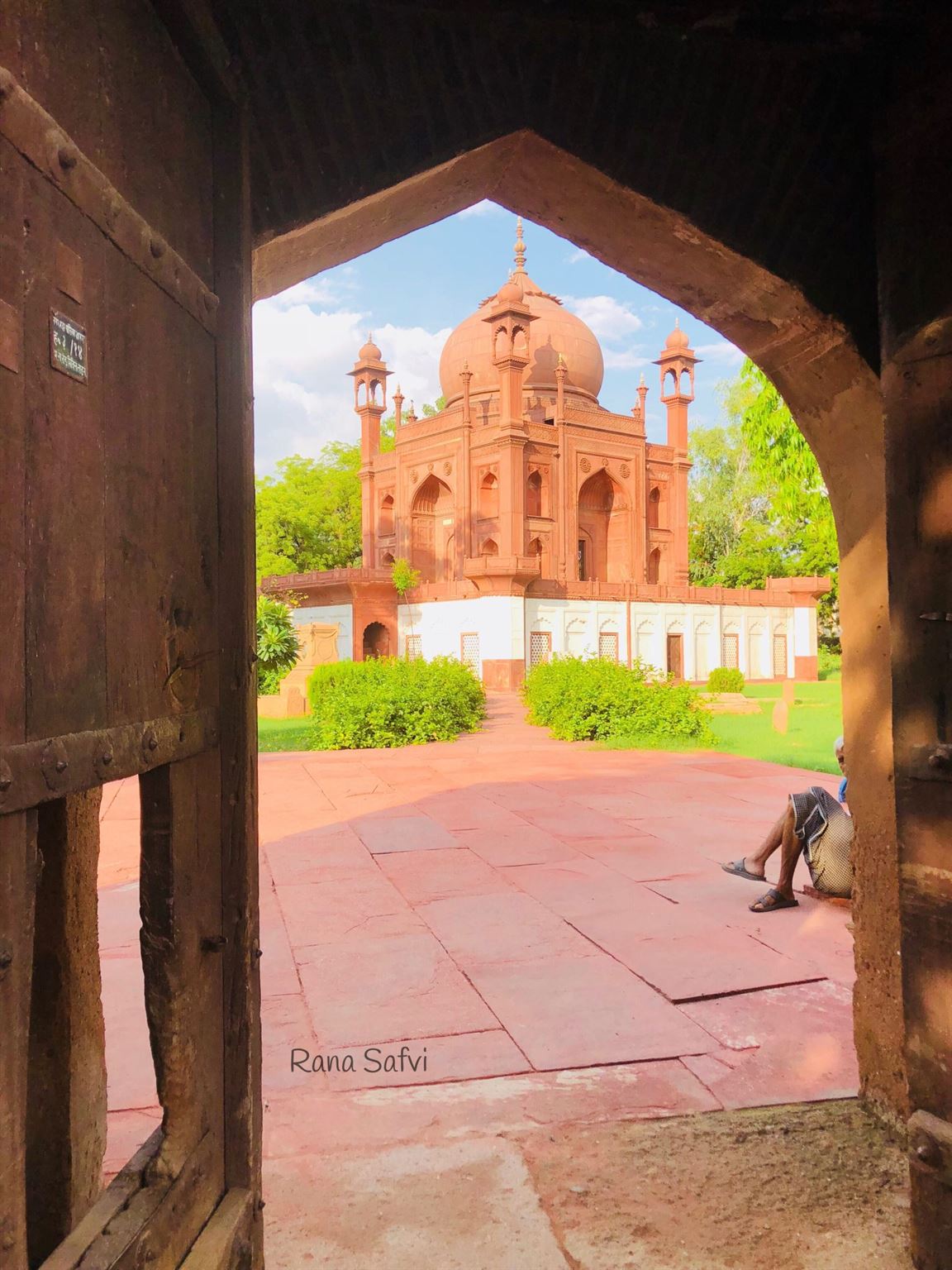A ‘Taj Mahal’ for a husband

02 SEPTEMBER 2018 00:00 IST
In Agra’s Roman Catholic Cemetery lies a ‘Red Taj’ built for a Dutchman by his wife

The Taj Mahal has unnecessarily become a standard for all tombs in India. Each monument is unique, yet the comparisons continue. The tomb of Shahnawaz Khan, son of Abdur Rahim Khan-e-Khanan, in Burhanpur is called the ‘Black Taj Mahal’. The tomb of Ibrahim Adil Shah II in Bijapur is called the ‘Taj Mahal of the Deccan’. And I discovered recently, much to my horror, that the exquisite tomb of Itmad-ud-Daula in Agra, also made of marble, is called the ‘Baby Taj’!

So, when I was informed of a ‘Red Taj Mahal’ in Agra, I was curious, not because of the comparison, but because it is located in the Roman Catholic Cemetery and was built for a Dutchman, Colonel John William Hessing, by his wife Anne. This seemed like an interesting reversal of the story that we are familiar with, and when I went there, I discovered that it was.

Comparisons with the Taj
Hessing was born in Utrecht, Holland, in 1739, and came to India as a 24-year-old. He served under the Nizam of Hyderabad and the Marathas, and was later given the command of the first two battalions of the newly raised Scindia army. After the death of Maharaja Mahadaji Scindia, he continued to serve under Maharaja Daulat Rao Scindia. When he could no longer actively serve due to ill-health, Hessing was made the Commandant of Agra Fort by Scindia. He died in 1803, and was buried in the Roman Catholic Cemetery in Nehru Nagar, Agra.

I entered the wooden gate of the premises with excitement as I had seen the red dome from afar. To the right of the entrance was a red sandstone tomb. Of course, it is not like the Taj Mahal, but as it is domed, has vaulted doorways, was built in the Mughal style, and is in Agra, the comparisons are inevitable. It has four slender minarets, attached to the main tomb, its cupolas crowned by pinnacles. 
The dome with its inverted lotus and finial rises from the centre. There are octagonal chabutras attached to the platform on all four corners. There is a fine carved panel running along the edge on the top and around the drum of the dome. Marble plaques at the main entrance have inscriptions in Persian.

As is the case with all Mughal tombs, the actual grave is underneath. There are many other graves in the corridor outside the crypt.
 Hessing’s monument, said to have been built at a cost of one lakh rupees, is the most prominent. According to Mathura: A District Memoir by F.S. Growse, a French traveller named Victor Jacquemont, who visited Agra in 1829-1830, had said that the Taj, though pretty, was hardly elegant and that the only pure specimen of oriental architecture was the tomb of John Hessing in the Catholic Cemetery. There is no doubt that he was talking of the time when the Taj Mahal had fallen into disrepair. It was mainly due to the efforts of Lord Curzon at the turn of the 20th century that the Taj acquired its current splendour, but I agree with Growse that Jacquemont views are “warped”. Hessing’s tomb is definitely elegant, but it cannot be compared to the Taj Mahal even on the Taj’s worst day.
Hessing’s monument, said to have been built at a cost of one lakh rupees, is the most prominent. According to Mathura: A District Memoir by F.S. Growse, a French traveller named Victor Jacquemont, who visited Agra in 1829-1830, had said that the Taj, though pretty, was hardly elegant and that the only pure specimen of oriental architecture was the tomb of John Hessing in the Catholic Cemetery. There is no doubt that he was talking of the time when the Taj Mahal had fallen into disrepair. It was mainly due to the efforts of Lord Curzon at the turn of the 20th century that the Taj acquired its current splendour, but I agree with Growse that Jacquemont views are “warped”. Hessing’s tomb is definitely elegant, but it cannot be compared to the Taj Mahal even on the Taj’s worst day.

Fanny Parkes in her journal Begum, Thugs and White Mughals, edited by William Dalrymple, describes the Hessing tomb as “a beautiful mausoleum” which is “well worth a visit”. It was built by a “native architect, by the name Lateef, in imitation of the ancient Mohammedan tombs”. She writes: “The tomb is beautiful, very beautiful and in excellent taste.” Lateef was apparently an expert parchinkar who used to inlay marble with precious stones as well as draw pictures of the Taj Mahal and other monuments in Agra. Parkes bought a few of them.
In the cemetery
The cemetery is well kept, green, and peaceful. Not many people know of it, so I found no visitors there. The caretakers were cooperative and took me around. 

(the tomb and tombstone of Walter Reinhardt known as Sombre or Samru : The inscription on his cenotaph says
“Aqui jaz o Walter Reinhard morreo aos 4 de Mayo no anno de 1778”)
The cemetery was originally built for the Armenian Christians who came during the reign of Emperor Akbar. The oldest grave belongs to John Mildenhall, an Englishman who died in 1614.
As I wandered around the cemetery, what struck me was the amalgamation of cultures. There was a grave with Allah and the cross carved on it. Many graves had Latin, English and Persian inscriptions on them. A small chapel had petitions to god by the faithful tied to its door, and window screens similar to what we see in dargahs.









